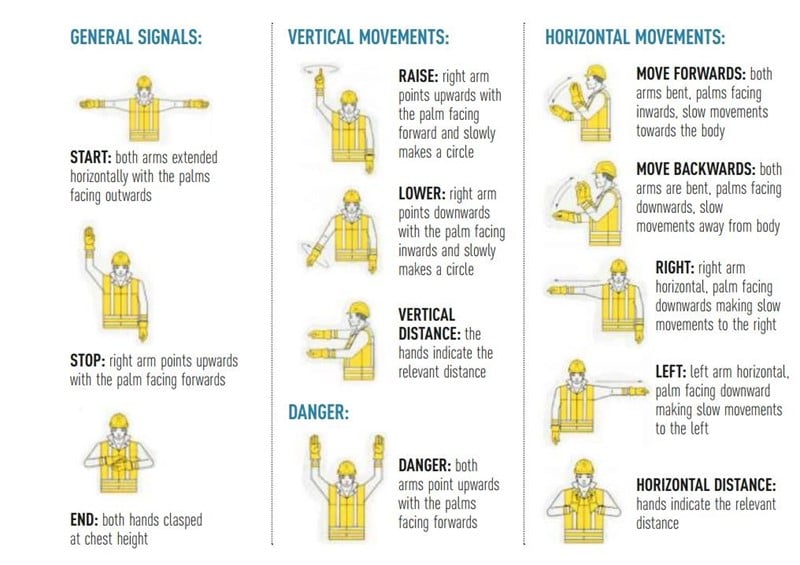The FTA looks at the latest issues to affect vans and trucks. Here, it provides guidance on banksman signals and contraflow systems.
Banksman signals
If you use banksmen to direct vehicles or cranes there must be a safe system of work that ensures that they, along with the driver, are using standard signals that are easily understood, and that the driver knows to stop the vehicle immediately if the banksman disappears from view.
The signals are detailed in the following illustrations.

Contraflow systems
With the holiday season well and truly here, it is inevitable that on your travels you will come across a ‘contraflow’ system somewhere on the journey. So, what does the Highway Code say about contraflows?
Rule 290 of the Highway Code states that contraflow systems mean you may be travelling in a narrower lane than normal and with no permanent barrier between you and oncoming traffic.
The hard shoulder may be used for traffic, but be aware that there may be broken down vehicles ahead of you. Keep a good distance from the vehicle ahead and observe any temporary speed limits.

A: If the driver reaches the end of their maximum 13- or 15-hour working day, and you take a van or company car to pick them up, you would be in contravention of the EU drivers’ hours rules.
The rules state that if a driver is not travelling between their normal residence to their normal place of work to collect or leave their vehicle, this journey time may not be treated as a rest or a break.
This means it will be treated as either a period of availability (POA) or ‘other work’ and is therefore part of the working day and would count towards their duty time. However, you can collect a driver who has run out of driving hours only if they still have some additional working/duty hours available in which to complete the collection.

A: When the legal entity of a business changes, as in your case, from a sole trader to a partnership, a new operator licence is required from the point that the partnership takes over.
An operator licence cannot be transferred, but it may be possible the commissioner will allow any operating centres to be transferred and this may reduce the time taken for approval of the new licence.
If a business is planning to make a change that would result in a change to their legal entity, due consideration should be taken for the time that may be required to obtain a new operator licence, if at all possible.

A: The term SO means statutory offence and the number after the letters refers to the maximum fine that could be levied for that offence.
There are five such levels: £200, £500, £1,000, £2,500 and £5,000. An offence with a fixed penalty of £100 with SO-4 shows that this offence could be subject to an immediate fixed penalty of £100.
But, if the perpetrator refused the penalty and took the case to court, or the stopping officer felt it was too serious a breach to offer a fixed penalty, then the final outcome could be a fine of up to £2,500, a figure which would be determined by the court.


















Login to comment
Comments
No comments have been made yet.